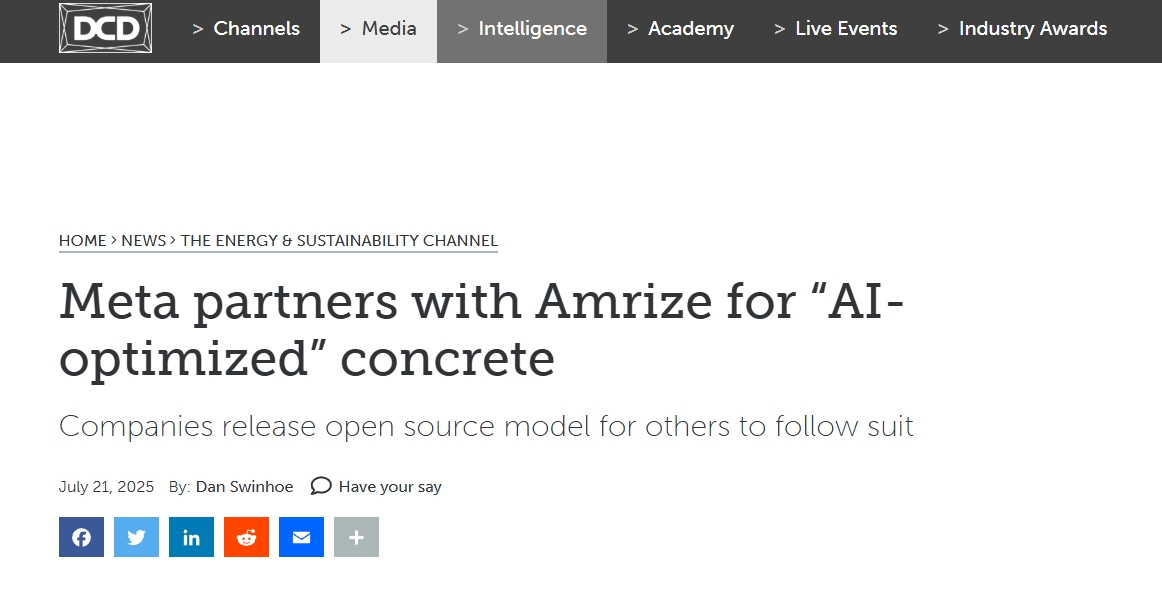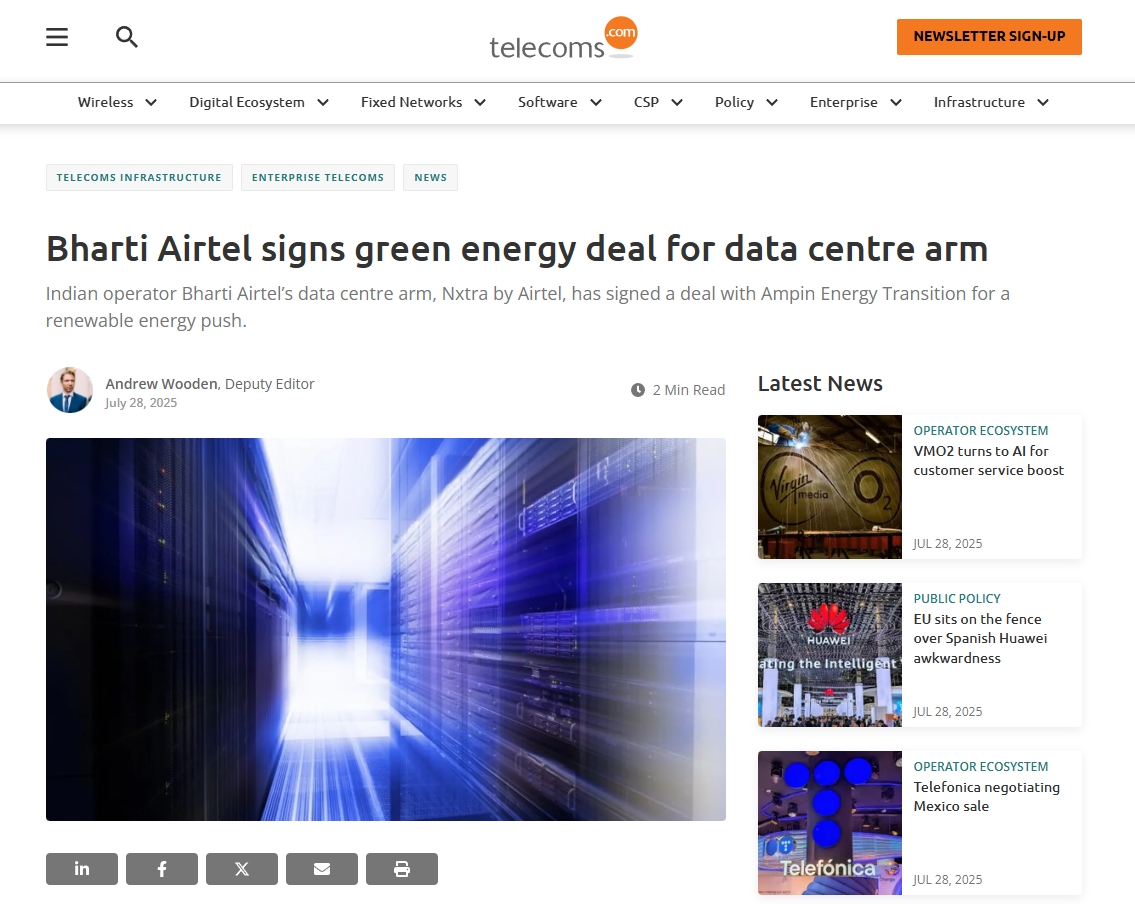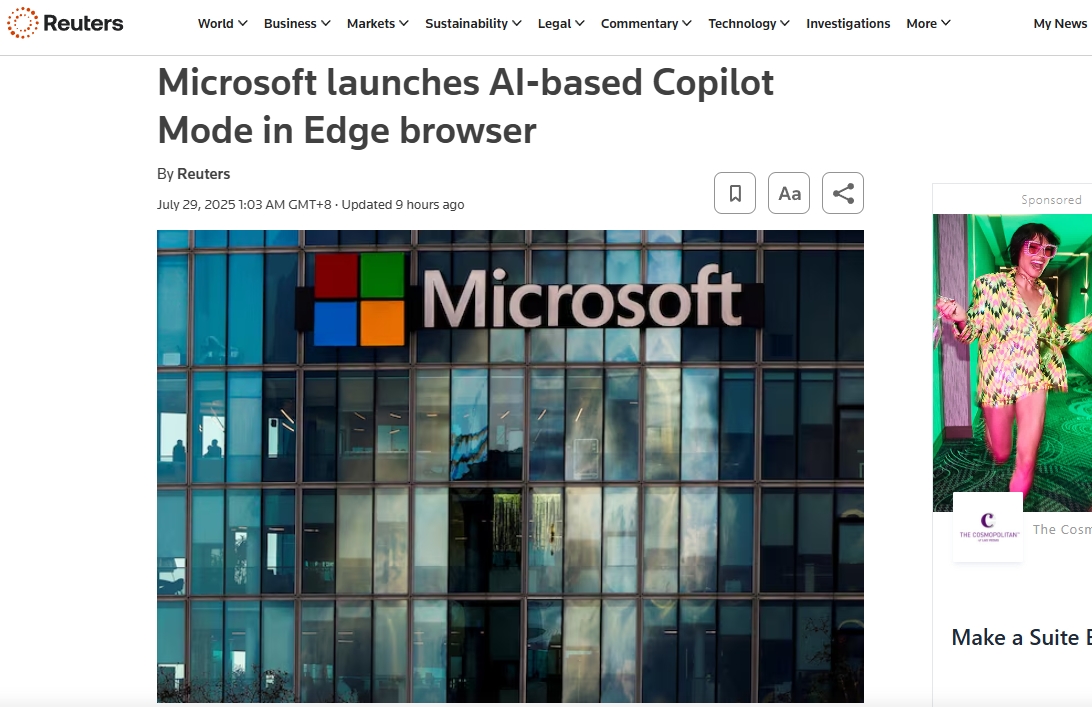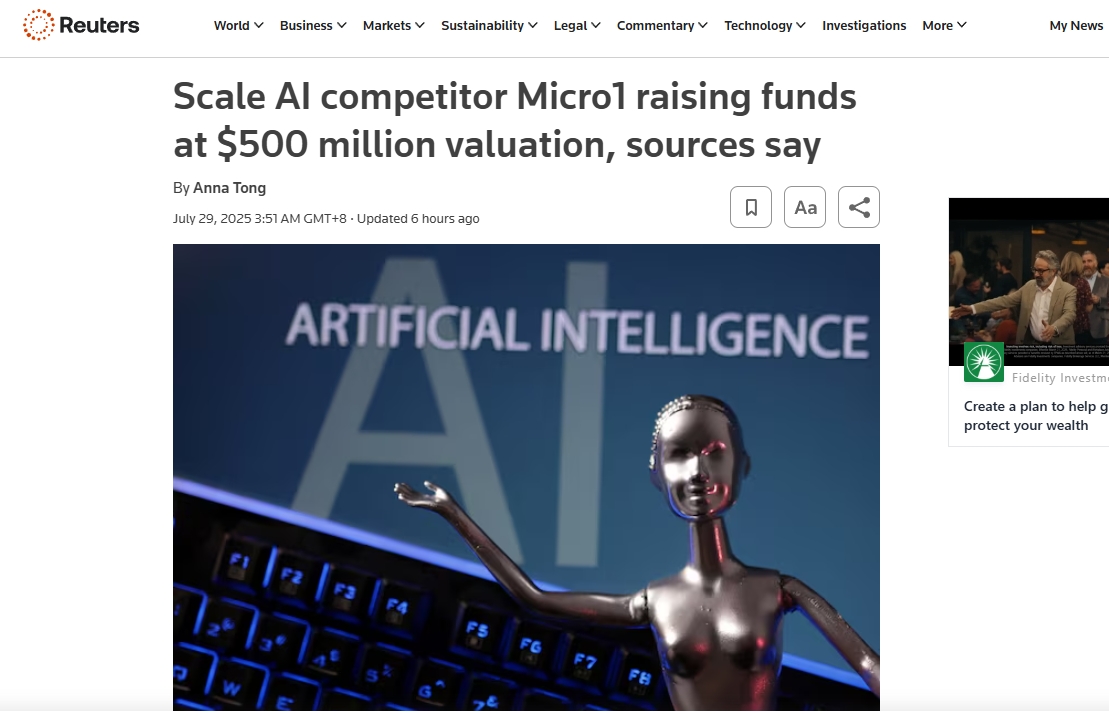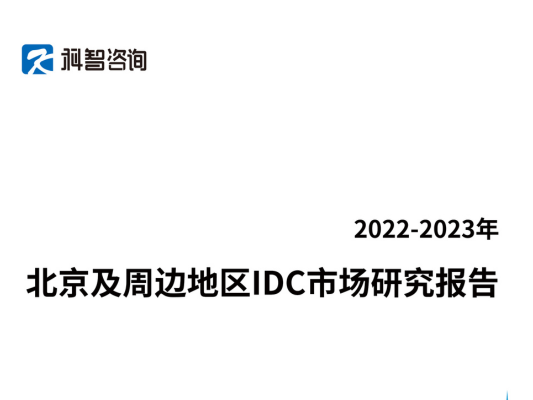Companies release open source model for others to follow suit.
Social media giant Meta and concrete maker Amrize had developed an AI model to create new optimal low-carbon concrete mixes.
The companies last week announced a partnership to develop a “first-of-its-kind, AI-optimized concrete mix” tailored to meet the specific needs of Meta’s data center in Rosemount, Minnesota.
Successful slab tests led to at-scale application in a site support section in one of the data center building slabs at the Rosemount site.
The custom mix was designed to deliver “high strength, maintain set-time and reduce carbon load,” while meeting Meta’s performance, speed, and sustainability targets.
The companies said the custom ECOPact mix in the data center currently under construction is estimated to reduce the total carbon footprint of the concrete by 35 percent.
“We work to design our data centers as efficiently and sustainably as possible, while driving our AI ambitions forward,” said Julius Kusuma, research scientist at Meta. “By partnering with industry expert Amrize, the University of Illinois, and Mortenson, we were able to maximize the performance and environmental profile of the concrete being used in our Rosemount Data Center. We are excited to continue testing different ways we can improve our material design in future projects with Amrize.”
Formulas for low-carbon concrete face several challenges compared to traditional concrete, including slower curing speeds and issues with surface quality. Based on data showing the custom mix meets the strength and other performance parameters required for the slab-on-grade application for Meta’s infrastructure, the mix can now be used in additional areas of the data center.
“Partnering with Meta and using AI to develop an innovative concrete mix that meets the unique needs of data centers is just the beginning,” said Jaime Hill, president of Amrize Building Materials. “Using AI, we can optimize our specialized concrete formulations for data center requirements, from performance needs like strength and durability to thermal regulation and energy efficiency. We look forward to continuing this exciting work with Meta to scale up the adoption of advanced tailored concrete mixes.”
The partnership combined Amrize’s material engineering and Meta-developed artificial intelligence (AI) models, working in partnership with the Grainger College of Engineering at the University of Illinois Urbana-Champaign, to create the data for the AI model. Developed using BoTorch and Ax, the model is open source and available on GitHub.
“AI-driven mix design lets us optimize concrete for performance, cost, and carbon in one step,” said Illinois Grainger Engineering professor Nishant Garg, who led the data-generation effort in his lab. “As mixes become more complex - with innovative raw materials and product formulation - AI can also forecast critical properties like strength gain over time.”
In its own blog post, Meta said it has been working to reduce the amount of concrete in its designs – reportedly leading to a 30 percent concrete carbon footprint reduction compared to previous designs. The company said it has eliminated the requirement to use concrete in electric and telecom duct banks in its latest data center design specifications.
“We are conducting further analysis to reduce the total volume of poured concrete, such as by opting for gravel fill in certain areas or reducing slab thickness elsewhere,” the company said.
Meta has previously partnered with CarbonBuilt to accelerate the production of low-carbon concrete, and provided carbon finance to CarbiCrete to scale the production of cement-free concrete.
Amrize was formed earlier this year after European concrete firm Holcim spun out its North American operations.
Several hyperscalers, including Amazon and Microsoft, are looking at developing lower-carbon concrete. Amazon has previously partnered with Holcim to use its low-carbon concrete in the US.
Announced last year, Meta is developing a 715,000 square foot (66,425 sq m) data center campus on a 280-acre site at UMore Park in Rosemount, a former World War II gunpowder production site outside Minneapolis that was later owned by the University of Minnesota.

